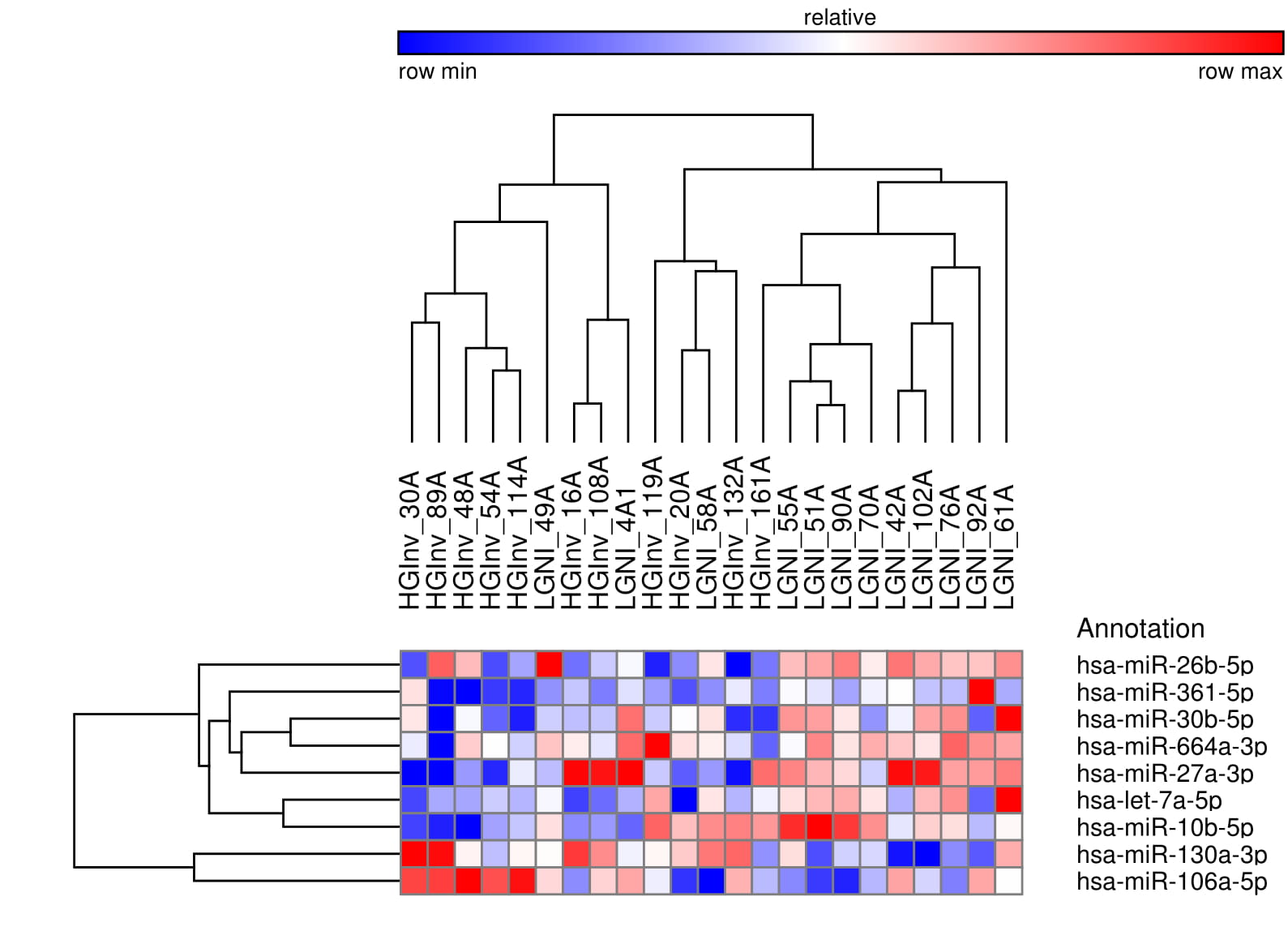MicroRNA Expression Profiles in Biopsy Specimens of Upper Tract Urothelial Carcinoma as a Reflection of Tumor Grade and Stage: a Tool for Clinical Decision Making
Eric G. Katz, MD1; Brendan Browne, MD1; Chintan K. Patel, MD1; Travis Sullivan, MS1, Eric J. Burks, MD1; Jay D. Raman, MD2; Joshua Warrick, MD2; David Canes, MD1; Kimberly M. Rieger-Christ, PhD1
1Lahey Hospital and Medical Center, Burlington, MA; 2Penn State Hershey Medical Center, Hershey, PA
Background
The current methodology for grading and staging upper tract urothelial carcinoma (UTUC) has inherent limitations due to insufficient tissue sampling during endoscopic biopsy. While grading is possible, staging is rarely accurate. Better understanding of tumor biology would enable practitioners to proactively risk stratify treatment strategies accordingly, potentially avoiding aggressive, extirpative procedures on less aggressive, superficial tumors. A previous study at our institution demonstrated that microRNAs (miRNAs) - small, non-coding RNA molecules that modify gene expression - are differentially expressed in radical nephroureterectomy (RNU) in a pattern that correlates with grade and stage. While this serves as a novel adjunct in understanding tumor biology after a radical surgery, it might be more clinically meaningful in the ureteroscopic biopsy setting. This would enable prediction of grade and stage prior to an aggressive resection and would help select patients for kidney-sparing procedures. We aimed to identify miRNA expression profiles in UTUC biopsy specimens predictive of histopathologic findings of the final RNU specimen.
Methods
Total RNA was extracted from formalin-fixed, paraffin-embedded UTUC biopsy samples from 2005 to 2016 under an IRB-approved study. Twenty-three unique biopsy samples from low-grade, non-invasive lesions and high-grade, invasive RNU pathologies were selected and profiled via miRNA RT-qPCR array for 752 unique miRNA. Validation of differentially expressed miRNA was performed with a second cohort of UTUC biopsy specimens from two institutions.
Results
Array analysis identified 26 miRNA differentially expressed between the low and high-grade tumors (p<0.05 and FDR<0.1). Of these, four were up-regulated and 22 were down-regulated in the high-grade, invasive tumors. Down-regulated miRNA included four members of the miR-200 family and three members of the let-7 family. Notably, these are known to be associated with muscle-invasive urothelial carcinoma of the bladder. Twenty of these miRNA were previously identified as differentially expressed in our investigation of RNU specimens. Hierarchical clustering analysis resulted in two groupings with samples aligning with the corresponding RNU pathology (p=0.029). A selection of miRNA was further validated by qRT-PCR on individual samples confirming differential expression within tumor grade and stage.
Conclusions
We identified distinct miRNA expression profiles of UTUC biopsies that differentiate low-grade, non-invasive tumors from high-grade, invasive lesions. This may enable practitioners to risk stratify treatment strategies to more appropriately match the tumor biology.

Back to 2018 Program
